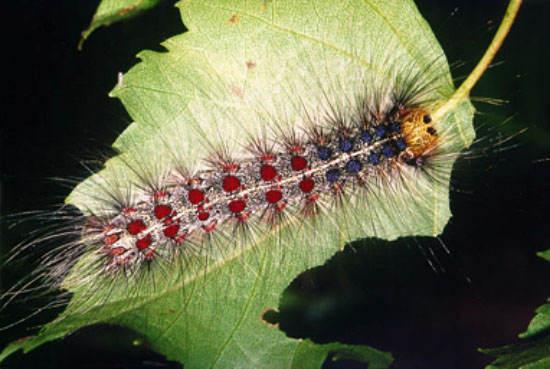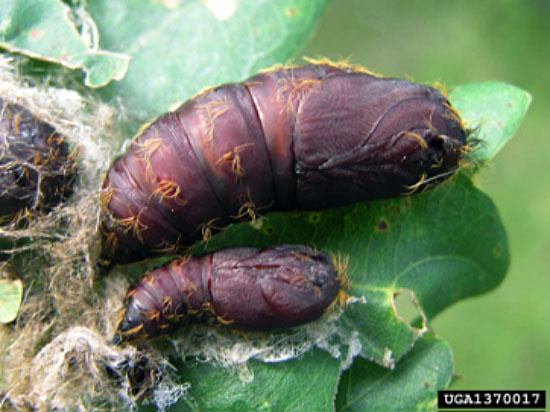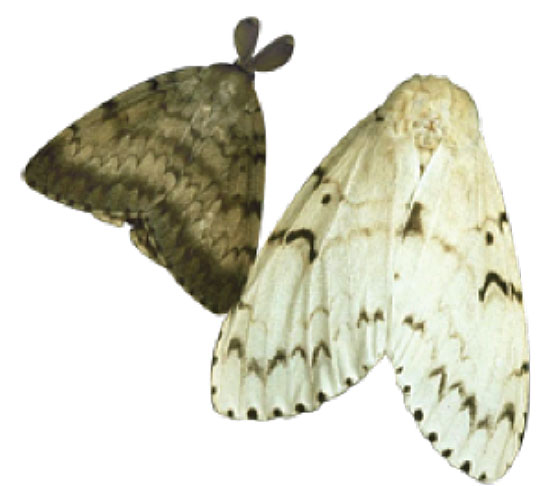Issue 5, June 2, 2014
Invasive Species Spotlight: European Gypsy Moth
Throughout the summer, my two interns, Lily and Evan, will be providing readers with some articles focusing on invasive species in Illinois. While they will be heavily involved with invasive species monitoring, they'll also be gaining some experience in outreach as well. If there is a particular invasive species topic you'd like to learn more about, let us know! First up, gypsy moth!
The European gypsy moth (EGM), Lymantria dispar, is a non-native moth that can attack up to 500 tree and shrub species. It is one of the most destructive forest pests in the United State. It is also present in the northern part of Illinois.
Larvae can commonly be found on hardwood trees such as oak and aspen. EGM attacks trees by feeding on their leaves. If defoliation is heavy and repeated, trees may die after 2 years of infestation. Tree mortality may also be increased when trees regrow a new set of leaves. This is energetically costly to the tree which may make it susceptible to other pests.
EGM caterpillars are voracious leaf eaters. These caterpillars consume as much leaf tissue as they can, as quickly as they can, in order to nourish themselves and become reproducing adults. A single caterpillar can consume 11 square feet of vegetation during its lifetime.

Results of a gypsy moth outbreak.

Gypsy moth eggs laid on a vehicle's tire.
Female EGM lay their eggs in summer on any flat surfaces such as patio furniture, auto tires, fire wood, grills, and children's toys. When these objects are transported, the egg masses are moved with them.

Gypsy moth adult female.
Caterpillars are most active in May and June when they are feeding on leaves. Full grown gypsy moth caterpillars are about 2-3 inches long. They are a grayish color with long hairs throughout their bodies. Caterpillars have five pairs of blue spots and six pairs of red spots along their backs.

Gypsy moth pupae.
Around mid-summer, caterpillars go into the pupal stage of their life cycle. After 2 weeks adult moths emerge from the cocoon. Cocoons vary in size according to their sex.

Gypsy moth male (left),female (right).
(Lilly Calderon, Kelly Estes)
Authors:
Lily Calderon
Kelly Estes